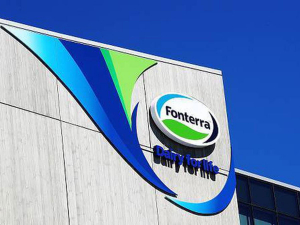Fonterra slashes forecast milk price, again
Fonterra has slashed another 50c off its milk price forecast as global milk flows shows no sign of easing.
 Fonterra's share price leapt to $3.09/share after it was announced the co-op would provide financial support to improve liquidity in its share trading platform.
Fonterra's share price leapt to $3.09/share after it was announced the co-op would provide financial support to improve liquidity in its share trading platform.
Fonterra's share price jumped on the news that the co-op will provide financial support to improve liquidity in its share trading platform - the Fonterra Shareholders Market.
After the co-op's share price plummeted to $2.29/share, compared to trading at $3.15 just three months ago, chairman Peter McBride wrote to farmer shareholders advising of the move.
Last week, Fonterra's share price reached $3.09/share, its highest level in over three months. Its share price has dipped since the co-op started consulting on its capital structure review and liquidity in the FSM has been low.
"We know there is concern about the decline in our share price over recent weeks and the impact this is having on your balance sheets," McBride told farmers in an email. "As set out in the capital structure consultation and voting documents last year, we will be putting in place additional arrangements to support liquidity in the FSM when we transition to the new Flexible Shareholding structure, including through arrangements with one or more market-makers.
"While those arrangements are still being worked on, Fonterra will on an interim basis be providing additional financial support to the current registered volume provider to more actively support liquidity in the FSM."
Farmer confidence has taken a slight dip according to the final Rabobank rural confidence survey for the year.
Former Agriculture Minister and Otaki farmer Nathan Guy has been appointed New Zealand’s Special Agricultural Trade Envoy (SATE).
Alliance Group has commissioned a new heat pump system at its Mataura processing plant in Southland.
Fonterra has slashed another 50c off its milk price forecast as global milk flows shows no sign of easing.
Meat processors are hopeful that the additional 15% tariff on lamb exports to the US will also come off.
Fears of a serious early drought in Hawke’s Bay have been allayed – for the moment at least.
President Donald Trump’s decision to impose tariffs on imports into the US is doing good things for global trade, according…
Seen a giant cheese roll rolling along Southland’s roads?